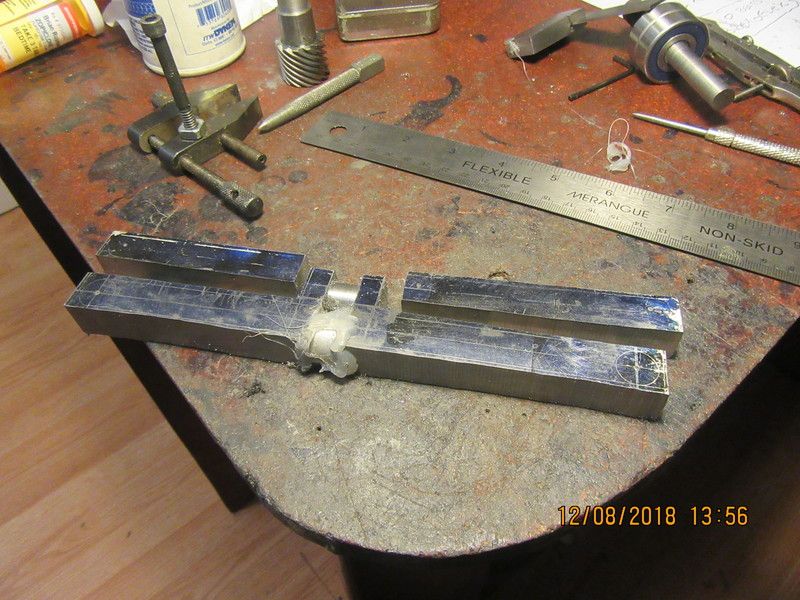I'm having a very "cranky" morning. You can only buy 1144 stress-proof steel in rounds. It doesn't come in flatbar.-So--I have the length of round stock clamped down and am flattening one side of it. I didn't want to cut the side off in the bandsaw, because my bandsaw has no fence. I have to take off 0.5" of material, and am taking 0.015" depth of cut at 500 rpm. I have taken 0.300" off in theis picture, and have 0.200 left to go. This is one of the few times I think about having a powered axis in the X plane. Once I get this side finished, I was going to flip the part over and do the other side in the mill, but after all the cranking I've been doing, I think I will make up a fixture and bandsaw most of the other side away.


















































































